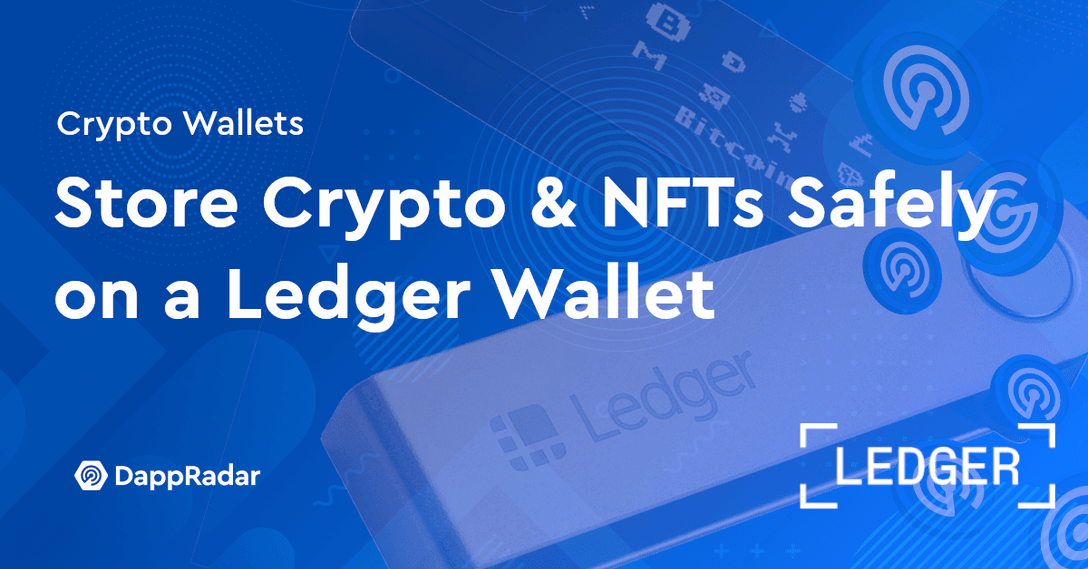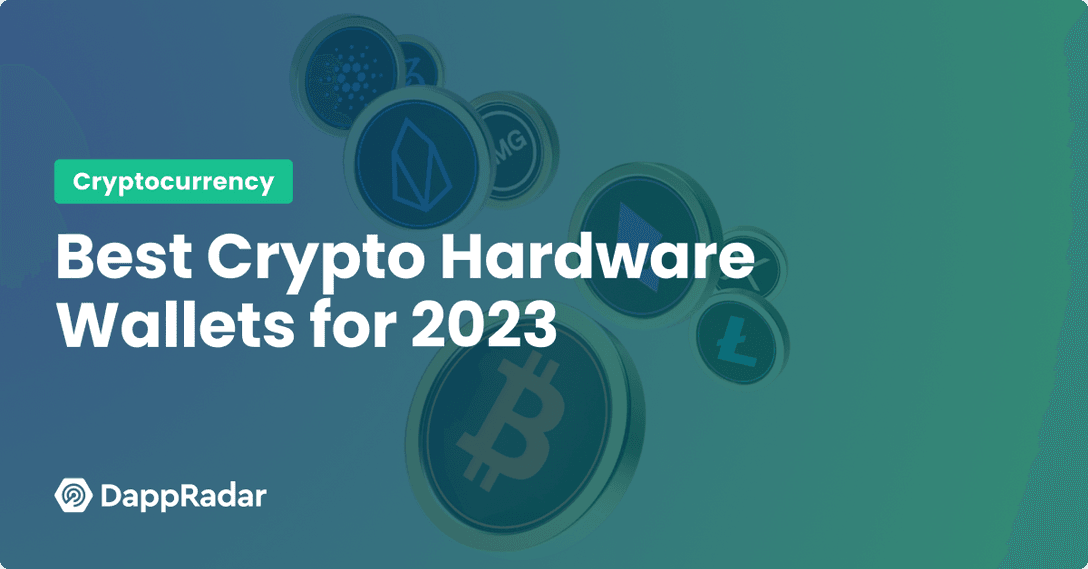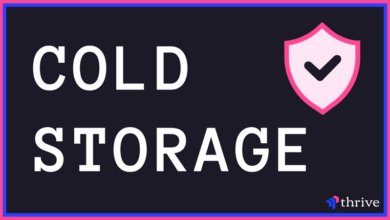
The Best Hardware Wallets for Crypto Safety
The Best Hardware Wallets to Store Your Cryptocurrency Safely is your comprehensive guide to securing your digital assets. We’ll explore the robust security features, popular brands, setup procedures, and best practices for safeguarding your crypto investments. This detailed overview will help you understand the importance of hardware wallets in the ever-evolving world of cryptocurrency.
From understanding the fundamental differences between hardware and software wallets to exploring the latest security protocols and customer reviews, this article covers everything you need to make an informed decision. We’ll delve into the specifics of various hardware wallets, comparing their features, prices, and capacities to assist you in selecting the ideal solution for your needs.
Introduction to Hardware Wallets
Hardware wallets are a crucial component of secure cryptocurrency storage. They provide a robust layer of defense against online threats, significantly enhancing the safety of your digital assets. These physical devices act as secure vaults, storing your private keys offline, shielding them from hacking attempts and malware. Unlike software wallets that reside on your computer or phone, hardware wallets are dedicated to safeguarding your crypto.The fundamental difference between hardware wallets and software wallets lies in their security model.
Software wallets store private keys on your computer or mobile device, potentially exposing them to vulnerabilities in the operating system or applications. Hardware wallets, on the other hand, isolate these private keys on a dedicated, tamper-resistant chip, making them much more resistant to hacking and theft. This separation of keys from the internet is a significant advantage for maintaining the security of your cryptocurrency.
Hardware Wallet Advantages
Hardware wallets offer a multitude of benefits, making them a preferred choice for serious cryptocurrency holders. Their physical nature provides a strong deterrent against online attacks. They also offer a high degree of control over your private keys, minimizing the risk of losing access to your funds due to a compromised online account. The offline storage of private keys is paramount in protecting your digital assets from malicious actors.
Hardware Wallet Disadvantages
While hardware wallets provide excellent security, there are some potential drawbacks. One disadvantage is the need to learn how to use the device and manage the associated process of generating addresses, sending and receiving transactions. This learning curve can be a hurdle for some users. Another factor to consider is the cost, as hardware wallets can be more expensive than software wallets.
Finally, the physical nature of hardware wallets can lead to issues like device loss or damage.
Comparison of Hardware Wallets
The market offers a variety of hardware wallets with varying features and functionalities. Choosing the right one depends on individual needs and priorities. This table summarizes key differences in physical size, connectivity, and overall design:
| Hardware Wallet | Physical Size | Connectivity | Features |
|---|---|---|---|
| Ledger Nano S Plus | Compact, easily portable | USB-C | Wide range of supported cryptocurrencies, intuitive user interface |
| Trezor Model T | Slightly larger than Nano S Plus | USB-C | Advanced security features, strong encryption algorithms, good compatibility |
| KeepKey | Medium-sized | USB-A | Known for its focus on security and reliability, some advanced features |
The table above illustrates the variety of hardware wallets available, each with its own set of advantages and disadvantages. Factors like size, connectivity, and available features are important considerations when making a choice.
Hardware Wallet Security Best Practices
Safeguarding your hardware wallet is just as important as choosing the right one. Always store your hardware wallet in a secure location, away from potential theft or damage. Do not connect it to any network or computer unless necessary, and disconnect it immediately after use. Regularly check for firmware updates and keep your device’s software up-to-date to address any potential vulnerabilities.
Security Features of Hardware Wallets
Hardware wallets are a significant advancement in cryptocurrency security, offering a robust layer of protection against common threats that software wallets and online exchanges lack. Unlike storing your private keys on a computer or phone, hardware wallets keep them physically separate and isolated from the internet, making them far more resistant to hacking and malicious attacks. This crucial distinction underscores their importance for safeguarding your digital assets.Hardware wallets achieve this separation by acting as secure, isolated devices that only interact with your computer or phone when you explicitly authorize it.
This physical separation is a cornerstone of their security, significantly reducing the attack surface compared to other storage methods. This approach ensures that even if your computer or phone is compromised, your private keys remain safe and secure within the hardware wallet itself.
Physical Isolation and Offline Operation
Hardware wallets are designed to operate completely offline. This means that they don’t connect to the internet unless explicitly prompted, thereby eliminating the risk of malware or phishing attacks that exploit online vulnerabilities. The physical separation of the device from internet-connected systems ensures your private keys are never exposed to potentially compromised networks. This offline nature is a critical aspect of their enhanced security posture.
Strong Encryption and Cryptographic Security
Hardware wallets employ robust encryption algorithms to safeguard your private keys. These algorithms are designed to resist brute-force attacks and sophisticated cryptographic techniques. This means that even if an attacker gains access to the wallet’s memory, they are unlikely to recover your private keys due to the complex encryption processes. Modern hardware wallets use cutting-edge encryption standards, providing a strong barrier against potential breaches.
Securing your crypto is crucial, and the best hardware wallets are a must-have. Choosing the right one depends on your needs, but they offer a significantly higher level of security than software wallets. This directly impacts the future of global finance, as secure storage is key for widespread blockchain adoption, as explored in this insightful article about Why Blockchain Adoption Will Shape the Future of Global Economy.
Ultimately, the best hardware wallet will keep your digital assets safe, which is vital in a world where blockchain technology is becoming more and more integrated into our financial systems.
Multi-Signature Technology
Multi-signature technology enhances security by requiring multiple signatures to authorize transactions. This means that multiple parties, each holding a portion of the private key, must approve a transaction before it can be executed. This decentralized approach significantly reduces the risk of unauthorized access. Imagine a scenario where two or more people need to approve a transfer. This level of verification drastically minimizes the possibility of theft, even if one party’s credentials are compromised.
Secure Storage and Handling Procedures
Proper handling and storage procedures are essential for maintaining the security of your hardware wallet. This involves physically protecting the device from loss or theft. Keep the wallet in a secure location, away from potential threats, and use appropriate security measures like password protection to further limit access. Consider a combination of strong passwords, physical protection, and security awareness training to ensure your hardware wallet remains secure.
Security Protocols in Hardware Wallets
| Security Protocol | Description |
|---|---|
| Secure Element (SE) | A dedicated chip within the hardware wallet that isolates private keys from the rest of the device. |
| Hardware Security Module (HSM) | A dedicated hardware component that provides enhanced security by encrypting and protecting sensitive data. |
| FIPS 140-2 Compliance | A U.S. government standard for cryptographic modules, ensuring that the hardware wallet adheres to robust security standards. |
| Secure Boot | Ensures that the hardware wallet’s operating system loads only from trusted sources, preventing malware from affecting the boot process. |
Popular Hardware Wallet Brands and Models

Source: altcoinbuzz.io
Choosing the right hardware wallet is crucial for securing your cryptocurrency. Beyond simply storing your digital assets, a robust hardware wallet provides a critical layer of protection against online threats and vulnerabilities. This section explores popular brands and models, examining their features, specifications, and usability to help you make an informed decision.
Popular Hardware Wallet Brands
Different hardware wallet brands cater to various needs and preferences. Some focus on simplicity, while others prioritize advanced features. Recognized brands like Ledger, Trezor, and Coldcard each offer a range of models with varying levels of functionality and price points.
Key Features of Popular Hardware Wallet Models
Hardware wallets typically feature a secure chip that isolates your private keys from your computer or mobile device. This separation is essential for protecting your crypto from malicious software or hacking attempts. This physical separation of the keys is the fundamental strength of hardware wallets. Different models emphasize varying aspects of security and user experience.
Ledger Nano S Plus
The Ledger Nano S Plus is a popular choice for its user-friendly interface and strong security. It’s relatively easy to set up and use, even for beginners. The Nano S Plus features a physical button for confirming transactions, adding an extra layer of security. The larger screen and physical buttons provide an intuitive and secure user experience.
It supports a wide range of cryptocurrencies.
Trezor Model T
The Trezor Model T is known for its advanced security features, including a robust security chip. It offers a more complex setup process compared to the Ledger Nano S Plus, but its features cater to advanced users who require maximum security and a wide range of customization options. The Model T supports a variety of cryptocurrencies, including newer and less common ones.
Coldcard
The Coldcard stands out with its offline-only operation, ensuring the highest level of security. This is achieved by removing the connection to the internet entirely. The offline-only nature of the Coldcard makes it ideal for users who prioritize the highest level of security, even exceeding the security of other wallets. However, this offline nature necessitates a different workflow, such as using a separate device to connect to the internet to send or receive transactions.
Comparison Table
| Feature | Ledger Nano S Plus | Trezor Model T | Coldcard |
|---|---|---|---|
| Price | Mid-range | Mid-range to High | High |
| Storage Capacity | Multiple Cryptocurrencies | Multiple Cryptocurrencies | Multiple Cryptocurrencies |
| Security Features | Strong Security Chip | Advanced Security Chip | Offline-Only Operation |
| Ease of Use | High | Medium | Low |
Ease of Use and User Experience
The ease of use varies significantly between different models. The Ledger Nano S Plus generally provides a smoother user experience, while the Trezor Model T requires more technical understanding. The Coldcard, with its offline-only operation, requires a different workflow, potentially making it less user-friendly for beginners. Consider your technical comfort level when choosing a model.
Setting Up and Using Hardware Wallets
Hardware wallets are a crucial component of secure cryptocurrency storage. They provide a robust layer of protection against online threats, safeguarding your digital assets from hacking, phishing, and malware. Understanding how to properly set up and use a hardware wallet is essential for maximizing its security benefits.Setting up a hardware wallet involves several crucial steps, from initial configuration to regular maintenance.
A thorough understanding of these steps, including backup procedures and transaction management, is paramount for preventing loss of funds.
Setting Up a Hardware Wallet
This process typically involves connecting the wallet to a computer or mobile device using a USB cable or Bluetooth. You’ll be guided through a series of prompts to configure the device and establish a secure connection. This often includes setting up a PIN for enhanced security. A critical step is creating and storing your recovery seed phrase, which is the ultimate backup in case of device loss or damage.
Backing Up Seed Phrases
The recovery seed phrase is your ultimate safeguard. It’s a unique string of words that allows you to recover access to your cryptocurrency if your hardware wallet is lost, damaged, or compromised. The importance of backing up this phrase cannot be overstated. Never store the seed phrase on the same device as your wallet or in a location that could be compromised.
Instead, write it down on paper and store it in a physically secure place, away from your computer and wallet. Consider using multiple locations for even greater security. A crucial aspect is to use a unique and secure location to protect your seed phrase.
Choosing the best hardware wallets for secure cryptocurrency storage is crucial. But as we look at the future of crypto, it’s also important to consider the environmental impact of mining. This directly affects the long-term viability of the whole industry. For example, innovative green mining solutions, like those explored in How Green Mining Solutions Are Reshaping Cryptocurrency Sustainability , are becoming increasingly important.
Ultimately, responsible crypto practices, including secure storage, go hand-in-hand with sustainable mining methods to ensure the future of cryptocurrencies.
Transferring Cryptocurrency
Transferring cryptocurrency to and from a hardware wallet involves a multi-step process. First, you’ll need to initiate the transaction on the hardware wallet itself. This typically involves selecting the cryptocurrency, the destination address, and the amount to be sent. Double-checking these details is critical to avoid errors. Confirming the transaction on the device is crucial before the transaction is processed.
Using a Hardware Wallet for Transactions
Hardware wallets can be used for various cryptocurrency transactions, including sending, receiving, and storing cryptocurrencies. The process for each type of transaction is similar. The wallet will guide you through each step, ensuring you have all the necessary information. Using a hardware wallet ensures that all transactions are verified on the device before they are processed.
Common Mistakes to Avoid
One common mistake is not backing up the seed phrase properly. Another pitfall is not keeping the hardware wallet in a secure location. Furthermore, failing to verify transaction details before confirmation can lead to accidental loss. It is important to carefully review all transactions before finalizing them. Carefully consider the security of your device and its environment.
Avoid using public or unsecured Wi-Fi networks for hardware wallet transactions.
Secure Hardware Wallet Storage
Proper storage is crucial for the security of your hardware wallet. A numbered list of essential steps to consider:
- Store the wallet in a secure, physical location. Consider a lockbox or a safe deposit box.
- Do not keep the wallet near your computer or other devices.
- Avoid storing the wallet in locations prone to theft or damage.
- Regularly review and update security measures.
- Never share your seed phrase with anyone.
These steps will help to maximize the security of your hardware wallet and the protection of your cryptocurrency assets.
Hardware Wallet Security Best Practices

Source: dappradar.com
Hardware wallets, while significantly enhancing cryptocurrency security, aren’t invulnerable. Understanding potential vulnerabilities and implementing proactive security measures is crucial for safeguarding your digital assets. This section details essential best practices to maximize your hardware wallet’s security and protect your investments.Protecting your hardware wallet involves more than just purchasing a device. A multifaceted approach encompassing physical security, software updates, seed phrase management, and recovery strategies is vital.
Choosing the best hardware wallets for your crypto is crucial, but equally important are steps to protect your identity when trading. Following Essential Steps to Protect Your Identity While Trading Cryptocurrencies , like using strong passwords and two-factor authentication, will significantly bolster your security. Ultimately, a combination of a robust hardware wallet and vigilant identity protection is the key to safe cryptocurrency management.
Ignoring these elements can expose your cryptocurrency to risks, potentially leading to significant financial loss.
Potential Security Risks
Hardware wallets, despite their robust design, aren’t impervious to threats. Potential risks include physical theft or damage, compromised software or firmware, and careless handling of the seed phrase. A misplaced or damaged wallet can render your crypto inaccessible. Malicious actors could exploit vulnerabilities in the wallet’s software or firmware to gain unauthorized access. Furthermore, a compromised seed phrase allows for complete control over your assets.
Protecting Your Hardware Wallet from Physical Theft or Damage
Protecting your physical hardware wallet is paramount. Store your wallet in a secure location, ideally a combination of a safe and a password-protected digital vault. Avoid storing it in easily accessible areas like your desk or bedside table. Consider using a locking mechanism for additional security. Use a strong, preferably biometric-protected, lock to protect the wallet when not in use.
Always be mindful of your surroundings when handling your wallet, and avoid placing it in locations prone to theft or damage.
Regular Software and Firmware Updates
Regularly updating your hardware wallet’s software and firmware is critical. These updates often patch security vulnerabilities, adding crucial protection against evolving threats. Manufacturers release updates to address potential exploits and enhance the device’s security. Ignoring these updates leaves your wallet susceptible to attacks and undermines its overall security posture. Actively checking for and installing updates is a crucial proactive step.
Keeping Your Seed Phrase Secure
The seed phrase is the key to accessing your cryptocurrency. Treat it with the utmost care and security. Never write it down in a location accessible to others. Do not share it with anyone, under any circumstances. Use a reputable, secure password manager for storing your seed phrase, with strong encryption and multi-factor authentication.
Recovery from Wallet Loss or Compromise
A comprehensive recovery strategy is vital for mitigating potential wallet loss or compromise. Carefully follow the manufacturer’s instructions for recovery procedures. Back up your seed phrase in multiple secure locations, using different mediums and encryption methods. Ensure that these backup copies are kept in a separate location from your hardware wallet. Establish a trusted contact to assist in recovery in the event of unforeseen circumstances.
Protecting Your Hardware Wallet from Loss
- Secure Storage: Store your wallet in a safe, secure location, ideally a combination of a physical safe and a password-protected digital vault.
- Physical Protection: Employ physical protection measures such as locking mechanisms or a secure case to prevent theft or damage.
- Environmental Awareness: Avoid placing your wallet in environments that may expose it to physical damage, theft, or compromise.
- Software/Firmware Updates: Actively check for and install software and firmware updates regularly.
- Seed Phrase Management: Use a strong password manager with robust encryption to store and manage your seed phrase.
- Recovery Plan: Develop a comprehensive recovery plan, including multiple backup copies of your seed phrase, stored securely in diverse locations.
Hardware Wallets and Different Cryptocurrencies: The Best Hardware Wallets To Store Your Cryptocurrency Safely
Hardware wallets are crucial for securely storing cryptocurrency, but their usefulness depends on their compatibility with the specific cryptocurrencies you want to hold. This section explores the relationship between hardware wallets and various cryptocurrencies, detailing how different wallets support different cryptocurrencies and the features they offer for each. Understanding this compatibility is vital for choosing the right hardware wallet for your needs.Choosing the right hardware wallet for your cryptocurrency holdings is paramount.
Different wallets support different cryptocurrencies, and some wallets might offer superior features for specific coins. This section will highlight these differences, empowering you to make informed decisions about which hardware wallet aligns best with your portfolio.
Supported Cryptocurrencies by Different Hardware Wallets
Different hardware wallets support different cryptocurrencies, reflecting the diverse landscape of blockchain networks. The level of support can vary significantly, influencing the user experience and security of your assets.
A crucial aspect to consider when selecting a hardware wallet is its compatibility with the cryptocurrencies you intend to store. Some wallets excel at handling specific blockchain networks, while others may support a wider range of coins. The compatibility directly impacts the functionality of the wallet, such as transaction signing and viewing transaction history.
Storing Various Cryptocurrencies on a Hardware Wallet
Storing various cryptocurrencies on a hardware wallet typically involves adding each cryptocurrency to the wallet. This process varies slightly depending on the specific wallet and the supported cryptocurrencies. The process often involves selecting the desired cryptocurrency, generating a new address, and then importing the cryptocurrency into the wallet.
The process is generally straightforward, but users should always carefully follow the instructions provided by the hardware wallet manufacturer to ensure a secure and seamless experience. It’s essential to understand the wallet’s interface and how to interact with different cryptocurrencies within its ecosystem.
Features for Specific Cryptocurrencies
Some hardware wallets offer unique features tailored to specific cryptocurrencies. For instance, wallets that support Bitcoin might offer specialized features for Bitcoin transactions, such as advanced transaction analysis or custom transaction settings. The level of support for a particular cryptocurrency can influence the features available.
This means that users holding various cryptocurrencies might find that their chosen hardware wallet offers different functionalities depending on the specific blockchain network of each asset. Some wallets might allow for more advanced transaction configurations for specific coins, providing users with greater control over their holdings.
Hardware Wallet Cryptocurrency Compatibility Table
Unfortunately, a comprehensive table detailing all supported cryptocurrencies for every hardware wallet is not readily available. This is due to the dynamic nature of the cryptocurrency market and the constant updates of these wallets. Always refer to the official documentation of the specific hardware wallet for the most up-to-date information on supported cryptocurrencies.
Comparison of Compatibility with Blockchain Networks
Comparing the compatibility of different hardware wallets with different blockchain networks involves examining their support for various blockchains and the features offered for each. Factors such as transaction speed, transaction fees, and security measures vary among blockchain networks.
Hardware wallet compatibility with different blockchain networks is crucial for users with diversified cryptocurrency portfolios. For instance, a user holding both Bitcoin and Ethereum might want to choose a hardware wallet that supports both blockchains with similar levels of security and features. This ensures a unified management system for all their cryptocurrencies.
Hardware Wallets and Future Trends
Hardware wallets have become an essential part of the cryptocurrency ecosystem, offering a robust layer of security for storing digital assets. As the crypto landscape continues to evolve, hardware wallets are poised to adapt and integrate with emerging technologies. This evolution promises enhanced security, user experience, and broader accessibility for a wider range of users.The future of hardware wallets is intertwined with the continued growth and development of the cryptocurrency market.
Innovations in hardware technology, combined with the need for ever-increasing security, will drive the evolution of these devices. Anticipating these changes and understanding the role of hardware wallets in the evolving cryptocurrency landscape is crucial for anyone looking to secure their digital assets.
Potential Innovations in Hardware Wallet Technology
Hardware wallet technology is likely to see advancements in several key areas. These advancements will aim to improve security, ease of use, and the overall user experience. Improvements in security protocols, for instance, may include the implementation of more advanced encryption algorithms and multi-factor authentication.
- Enhanced Security Protocols: Hardware wallets are likely to incorporate more sophisticated encryption methods and multi-factor authentication (MFA) to protect against increasingly sophisticated attacks. For example, the integration of biometric authentication could add an extra layer of security, making it harder for unauthorized individuals to gain access to the wallet.
- Improved User Interface (UI): A more intuitive and user-friendly UI will be crucial for attracting new users. This includes simpler navigation, improved visual feedback, and integration with mobile devices. This could mean a seamless connection to mobile wallets or an enhanced, intuitive interface for managing multiple cryptocurrencies.
- Increased Connectivity and Interoperability: Hardware wallets could potentially connect with other security measures or devices, such as secure cloud storage or trusted third-party services, further bolstering their security posture. A hardware wallet that automatically backs up data to a secure cloud server could be a future development.
The Role of Hardware Wallets in the Evolving Cryptocurrency Landscape
Hardware wallets play a critical role in maintaining trust and security in the rapidly expanding cryptocurrency ecosystem. Their role will only become more important as the number of cryptocurrencies and use cases continues to increase.Hardware wallets are vital for safeguarding against evolving threats and vulnerabilities. As more sophisticated attacks emerge, the need for robust security solutions like hardware wallets will intensify.
These devices will remain crucial for safeguarding assets in a complex and rapidly changing digital landscape.
Potential Improvements to Current Hardware Wallet Designs, The Best Hardware Wallets to Store Your Cryptocurrency Safely
Several improvements can enhance current hardware wallet designs. This includes better physical protection against tampering, more intuitive interfaces, and support for more cryptocurrencies. The current designs can be enhanced to offer more robust security measures, and to be more resilient to physical attacks.
- Enhanced Physical Protection: The physical design of hardware wallets could be improved to enhance resistance against physical attacks, such as tampering or theft. This includes better materials, reinforced housings, or even built-in tamper-evident seals.
- Improved Support for a Wider Range of Cryptocurrencies: Future hardware wallets could be designed to support a wider range of cryptocurrencies, enhancing their usability and versatility. This may include the ability to store various tokens or support upcoming blockchain platforms.
- Integration with Other Security Measures: Hardware wallets could integrate with other security measures, such as biometric authentication, or secure cloud storage, for a layered approach to security. This could lead to a more seamless and integrated user experience for managing digital assets.
Integration of Hardware Wallets with Other Security Measures
Hardware wallets can be integrated with other security measures to provide a multi-layered approach to protecting digital assets. This integration may include biometric authentication, secure cloud storage, or trusted third-party verification.Hardware wallets are already beginning to integrate with other security measures. The addition of features like multi-factor authentication, or biometric scanning, could increase the overall security posture.
Hardware Wallet Customer Reviews and Feedback

Source: dappradar.com
Understanding customer experiences is crucial for evaluating the effectiveness and usability of hardware wallets. Reviews and feedback offer valuable insights into strengths, weaknesses, and areas for improvement. They help potential buyers make informed decisions and allow manufacturers to refine their products. This section analyzes common themes in reviews and provides examples to illustrate both positive and negative experiences.
Analysis of Common Complaints
Customer feedback reveals several recurring concerns about hardware wallets. Ease of use, particularly for new users, frequently emerges as an issue. Some models are criticized for their complex setup processes, leading to frustration and potential errors. Technical glitches, such as connectivity problems or software malfunctions, are also prevalent complaints. Furthermore, the security of the wallet’s encryption and firmware updates are areas of concern, with some users expressing worries about vulnerabilities.
Analysis of Common Praise
Positive reviews consistently highlight the crucial role hardware wallets play in enhancing security. Users praise the peace of mind they gain from having their cryptocurrencies protected offline. Many reviews emphasize the robustness and reliability of the hardware, highlighting its ability to withstand various attacks. The secure storage of private keys, a core function of hardware wallets, is frequently praised.
The accessibility of wallets through intuitive interfaces and seamless integration with various cryptocurrencies is also lauded by many users.
Positive Customer Experiences
Numerous positive reviews praise the security features of Ledger Nano S. Users mention that the offline storage of private keys provides a sense of security and confidence, making it a preferred choice for long-term storage. One user stated, “The Ledger Nano S is a rock-solid way to store my crypto. The ease of use and confidence in its security make it a worthwhile investment.” Another user highlighted the seamless integration with various crypto exchanges.
Positive reviews also often mention the reliable connectivity and intuitive user interface.
Negative Customer Experiences
Some users express dissatisfaction with the Ledger Nano X. One recurring complaint is the perceived complexity of the setup process, leading to errors and frustration. Another concern is the high price point compared to other wallets in the market. One user wrote, “The Nano X setup was a nightmare. I spent hours trying to get it to work and still couldn’t get it to connect properly.” Other negative experiences cite issues with firmware updates, connectivity problems, or compatibility issues with certain software.
Summary of Customer Feedback (Table)
| Category | Positive Comments | Negative Comments |
|---|---|---|
| Security | Offline storage of private keys provides peace of mind. Robust and reliable hardware. Secure private key management. | Concerns about vulnerabilities in encryption or firmware updates. |
| Ease of Use | Intuitive interfaces and seamless integration with various cryptocurrencies. | Complex setup processes. Connectivity issues. Difficulty with initial setup. |
| Reliability | Reliable connectivity. Strong reputation for reliability. | Connectivity problems. Technical glitches. Software malfunctions. |
| Value | Good value for price (for some models). | High price points compared to other wallets in the market. |
Outcome Summary
In conclusion, choosing the right hardware wallet is crucial for safeguarding your cryptocurrency. By understanding the security features, setup procedures, and best practices Artikeld in this guide, you can confidently store your digital assets securely. This article provides a comprehensive resource to make an informed decision and keep your crypto safe from potential threats.
Key Questions Answered
What are the common security risks associated with hardware wallets?
While hardware wallets are generally considered secure, potential risks include physical theft or damage, malware attacks targeting the setup process, and compromised firmware or software updates. Keeping your seed phrase secure is paramount, as losing or compromising it can lead to total loss of your cryptocurrency.
How do I back up my seed phrase securely?
Never store your seed phrase digitally, and avoid writing it down in a location that could be easily accessed or compromised. Consider using a secure offline method like a physical, password-protected notebook, or a trusted, encrypted cloud storage service with strong security measures.
What are the differences between different hardware wallet brands?
Different brands offer varying features, such as size, connectivity options, supported cryptocurrencies, and security protocols. Some may prioritize ease of use, while others emphasize advanced security features. Consider your needs and preferences when selecting a hardware wallet.
What is multi-signature technology and how does it enhance security?
Multi-signature wallets require multiple signatures to authorize a transaction. This adds an extra layer of security, making it more difficult for unauthorized access to your funds. It distributes the control over your cryptocurrency amongst several parties.




